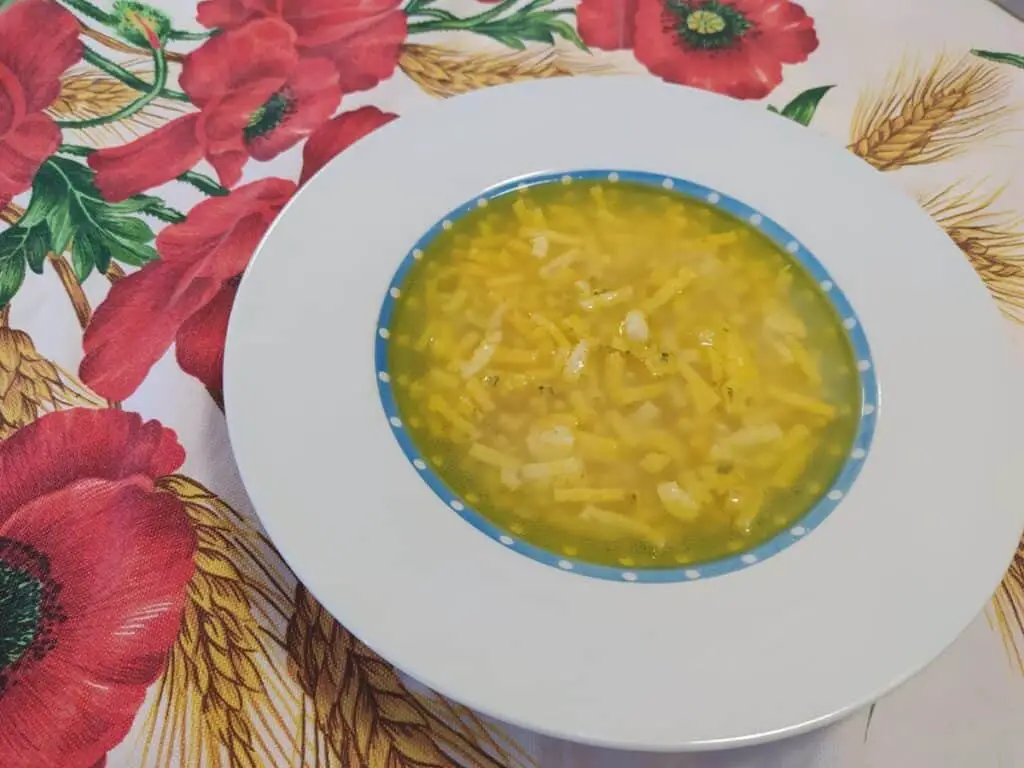Pizza is a food that is of great cultural significance in Italy because it is simple but versatile, making it hard for someone to dislike it. Pizza is very affordable, which makes it popular and within everyone’s reach. Pizza is a social food in Italy, strongly associated, in the minds of the Italians, to having a great time in the company of others. Pizza is suitable for meals out with family and friends, but also more informal work gatherings.
Keep reading to find out more in detail why pizza is important to the Italian culture.
Table of contents
- The cultural significance of pizza in Italy
- Where is pizza eaten in Italy?
- When do Italians eat pizza?
- What are the different types of pizza in Italy?
- Is pizza really Italian?
- Traditional Italian pizza: how is it made?
- Pizza in different regions of Italy
- Italian foods which are similar to pizza
The cultural significance of pizza in Italy
Pizza is a key food in the Italian culture, to the point that Italy and pizza are immediately associated in the minds of people all over the world.
Wheat has historically been one of the main crops in Italy, thanks to the Mediterranean climate. Wheat-based foods have been a main staple in Italy since before Roman times and so the popularity of pizza in Italy is also based on the wide availability of wheat.
Pizza in the Italian culture is not an everyday food, but, rather, a food to be enjoyed when going out. Unlike pasta, which is eaten at home, for some on a daily basis, pizza is eaten at the restaurant in the vast majority of cases.
Pizza is equally popular for family dinners and dinners with friends and is a food that can be eaten informally with your hands, without cutting it with a knife and fork, although pizza is also suitable for work dinners and other types of gatherings of the more informal kind, such as church group dinner, gym group dinner, old classmates dinner, and so on..
Here are the reasons why pizza is so popular and culturally significant in Italy:
- Pizza is a simple food which is hard for someone to dislike
- Pizza is versatile and can have many different toppings so it meets all tastes
- Pizza is inexpensive, and so Italians can afford to go out for pizza more often than they would go for an ordinary restaurant dinner
- Pizza can be very filling, depending on the toppings, but it can also be made light and digestible
Where is pizza eaten in Italy?
Pizza is eaten mainly in restaurants, but also in specific pizza bars.
Pizza is made out of very few ingredients, and is very flexible in terms of the toppings you can use, and so almost anyone can make it at home.
However, getting homemade pizza right is not easy and takes a lot of practice. For this reason, pizza is prevalently eaten at the restaurant and few people in Italy choose to have it at home.

When Italians do choose to eat pizza at home or somewhere else, such as a school or a beach, they prefer to order it from a pizzeria and go and collect it. Delivery driving is not yet very popular in Italy.
When do Italians eat pizza?
As a general rule, pizza is considered an evening meal, because it is traditionally a social food to be consumed fresh out of a pizza oven, which needs time to be lit and warm up. Most restaurants don’t serve any pizza for lunch, although certain forms of pizza can be eaten as a snack during the day.
I’ve heard of many tourists who were frustrated by not being able to find pizza for lunch in Italy. This does not make any sense to them, because Italy is so famous for pizza, and yet pizza can only be eaten at certain times of the day!
A friend told me that, during their holiday in Italy, they came across a restaurant with a sign saying “we don’t serve pizza for lunch”. This sign had almost certainly been put up for the tourists, who must have asked for pizza at lunch many times.
What are the different types of pizza in Italy?
Below are details of the three main different forms of pizza that you can find in Italy, and when you can eat them:
- Pizza al taglio
The meaning of “pizza al taglio” is “cut pizza”. This type of pizza is usually thicker than the pizza you would eat at the restaurant. It is cooked in rectangular or square trays and cut into rectangular or square pieces.
The Italian “pizza al taglio” can be eaten as a snack in the afternoon from certain specific pizza bars or is sometimes sold in bakeries and can be bought from the morning, although this is more rare.
I remember that when I was in school, staff from a local bakery would come and sell pizza at recess, which would be some time around 10 am.
The morning is traditionally a very unusual time to eat pizza in Italy, and few places sell it because it is unlikely that it would be bought and, since it has to be eaten fresh, it would go to waste.
There are exceptions in places such as schools, where bakeries make pizzas specifically for the school recess, as this gives them some guarantee that it will be bought.
If you buy “pizza al taglio” from a bakery, the toppings are likely to be very simple, for example salt and rosemary, salt and onions, tomato and mozzarella.
If you buy “pizza al taglio” in the afternoon from a dedicated pizza bar, the toppings are very varied, and there is a lot of choice.
Italians usually have “pizza al taglio” to take away and eat as they walk. This type of pizza is wrapped in paper and sometimes you get a small paper tray with it.
- Pizza a spicchi
The meaning of “Pizza a spicchi” is “sliced pizza”. This type of pizza is exactly the same as the pizza you would eat at a restaurant, but is bought from dedicated pizza bars, where it can be eaten from about 4pm onwards or taken away as a snack.
When Italians eat “pizza a spicchi”, they would usually eat one or two slices, as this is considered a snack, not a whole meal.
- Pizza al piatto
The meaning of “pizza al piatto” is “plate pizza”.
This kind of pizza is the more well-known round pizza that you would eat at the restaurant for dinner or take away.
Is pizza really Italian? The history of pizza
Pizza was invented in Italy, more specifically in Naples, in the Campania region in southern Italy.
Prior to pizza being invented, people in Naples ate a typical street food called “focaccia” which resembled a flat bread.
In the 19th century, the Neapolitans began to use tomato sauce and olive oil as toppings for the focaccia and, gradually, the more modern pizza as we know it today emerged from this tradition.
The most popular pizzas in Naples in the nineteenth century were Marinara pizza (tomato sauce, oregano and olive oil) and Margherita pizza (tomato sauce, mozzarella cheese and basil).
Margherita pizza was invented by a baker called Raffaele Esposito, who wanted to create a pizza using the colours of the Italian flag (called “la bandiera tricolore”, the three-colour flag) to celebrate the newly-formed Italian State.
The colours of the Margherita pizza in fact are red (tomato sauce), white (mozzarella cheese) and green (fresh basil).
The baker Raffaele Esposito created the Margherita pizza as homage to queen Margherita who was wife to King of Italy Umberto I, who visited Naples in 1889.

The legend says that Queen Margherita was amazed at the taste of the Margherita pizza, which was named “Margherita” after her.
Traditional Italian pizza: how is it made?
The most traditional Italian pizza is the pizza made in Naples. The art of making Neapolitan pizza has been awarded the status of “Intangible Cultural Heritage” by UNESCO.

For a pizza to be certified as a traditional Italian pizza, it must have a taller and thicker outer edge and a thinner centre. The dough contains no added fats and is kneaded by hand on a marble countertop and cooked in a wood-fired pizza oven.
The traditional Margherita pizza is topped with tomato sauce from San Marzano, extra-virgin olive oil, buffalo mozzarella or a mozzarella relative called “fior di latte” and fresh basil.
Pizza in different regions of Italy
There are some regional variations in how pizza is prepared throughout Italy.
In central and northern Italy, pizzas have a thinner and crunchier base and in southern Italy, in accordance with the Neapolitan tradition, pizza bases are thicker and softer.
An example of a thick and soft type of pizza found in southern Italy is the Sicilian “sfincione”, which is found in bakeries and pizza bars and eaten mainly as a snack.
Italian foods which are similar to pizza
Italy has a number of other foods which resemble pizza very closely but are not pizza. Some main examples are:
- Calzoni, panzerotti, pizza farcita and focaccia
These are essentially a pizza base which is folded over to contain various types of filling
- Crescia
Crescia is similar to a pizza but thinner and crunchier and is usually topped with vegetables or cold meats
- Piadina
Piadina is typical of Emilia Romagna. Although it may look similar to pizza, the dough is quite different as it contains fat. Piadina is very similar to a thicker type of flatbread, and is usually filled with cooked or raw vegetables and cold meats.






Pingback: Why Italians Don't Cut Their Pizza - contentoitaliano